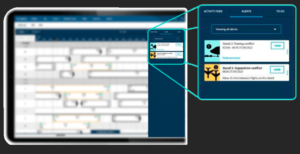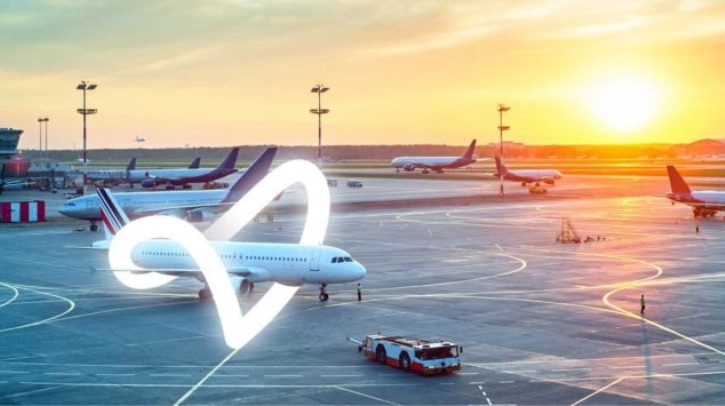Few industries can match airports’ day-to-day operational complexity. Fewer still must navigate said complexities in full scrutiny of their customers and without full control of all the moving parts required for an on-time departure. While the challenges of orchestrating multiple parties are well documented, the opaque nature of critical factors like towing capacity, ground handler availability and equipment limitations is often overlooked.
Operational disruptions – an all too common tale
How many times has your flight arrived at your stand only to find a delay in disembarkation due to missing stairs? How often have you witnessed your departure time get pushed out due to a delayed tow on the apron nearby? These scenarios of overlapping aircraft tows – caused by the same tug being unable to manage concurrent tasks, which in turn creates cascading delays that disrupt schedules – tarnish passenger experiences, and, often unfairly, reflect poorly on the airport.
A smarter approach starts with data
In the airport’s quest to continually improve airside performance, the divide between towing operations, ground handling and gate planning is taking a front-row seat.
This mission begins with dismantling information and physical barriers to connectivity.
Within gate management processes, soft grouping preferences – often used to support airlines’ requests – can be extended to include all flights managed by the same ground handler. This can significantly streamline turnaround times and maximize equipment use.
The game changer – joined-up operations and machine learning
Beyond grouping, connecting towing capacity and schedules directly with stand and gate management systems can yield dramatic and immediate benefits.
Harnessing the power of machine learning (ML) unlocks a wealth of insights from historical towing data, serving up valuable insights into punctuality and the variables affecting towing performance. This can then be used to drive efficient tug assignments and highlight any capacity issues early enough to mitigate problems.
For example, by considering the number of concurrent tows available based on equipment and ground handler availability against gate allocations, planners can generate a more optimal and robust route plan and workflow assignment, preventing the inefficient crisscrossing of tugs across the apron.
Ultimately, the goal is to avoid predetermined yet inefficient towing assignments and instead prioritize off-block efficiency.
Navigating real-time events
Significant changes to the flight schedule or equipment malfunctions on the day of operations can torpedo even the best-paid plans. To optimize off-block efficiency, tow assignments must remain dynamic and aligned with the live situation.
Airside surface management tools have emerged as a valuable data source and early warning system. Offering real-time ground situation updates, these tools could connect live towing and aircraft movement data into ML-powered stand management tools to fine-tune towing predictions, alert planners of impending conflicts and recommend the best gate or stand reassignments. This is determined not only by operational efficiency but also by considering the impact on passengers, asset management and efficient use of ground handler equipment.

Airside camera analytics also provide a source of data to support the optimal use of gates, tows and ground-handling resources. These tools provide real-time visibility into ground operations by capturing key turnaround milestones. Data on aircraft movements, ground handling activities and equipment usage, including the arrival time and use of tow vehicles, is captured and analyzed in real time. When integrated with the smart gate planning tools, this granular, time-stamped data enriches operational planning with real-time insights. ML algorithms process historical trends alongside these live inputs to predict turnaround times more accurately, identify potential delays early and recommend proactive gate and towing reassignments.
Live situational awareness for all
The ability to provide all aviation partners with one source of planning truth is essential for this to succeed. Serving up allocation plans with towing plans via a web-based device and in a role-based view for handlers so they can access from anywhere, enables potential conflicts or capacity issues to be quickly identified and mitigated.
Post-operational analysis
A regular stream of performance data, from equipment and stand use to off-block times against the schedule, drives continuous improvement. Analyzing decisions, their context and outcomes refines future recommendations, embedding both human expertise and data-driven insights into operational strategies.
From airside efficiency to airport-wide optimization
Optimizing and connecting towing and resource management is more than just an airside efficiency exercise – it’s a foundational step toward smarter, airport-wide operations. By breaking down data silos and integrating real-time insights from ground activities with predictive, ML-powered stand and gate management tools, airports can achieve a more connected, responsive operation.
This approach not only enhances turnaround efficiency but also provides the predictive power and situational awareness needed to manage resources dynamically across the entire airport. As these systems evolve, they lay the groundwork for a more unified, data-driven operational strategy – where every decision, contributes to optimizing the performance of the airport as a whole.
For more top insights into the future of technologically optimized turnarounds, read Passenger Terminal World’s exclusive feature, “How are airports revolutionizing the turnaround process with AI and computer vision?”, here.

